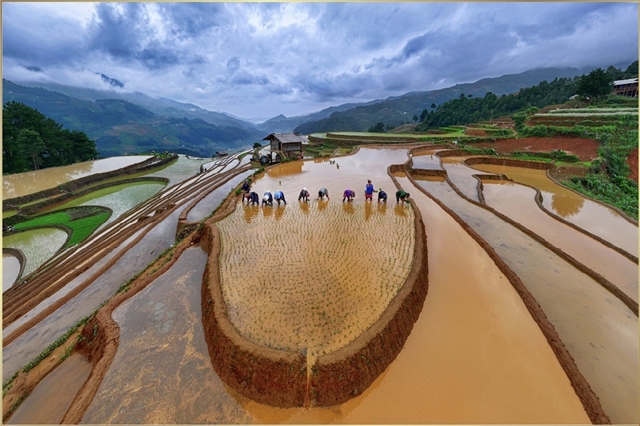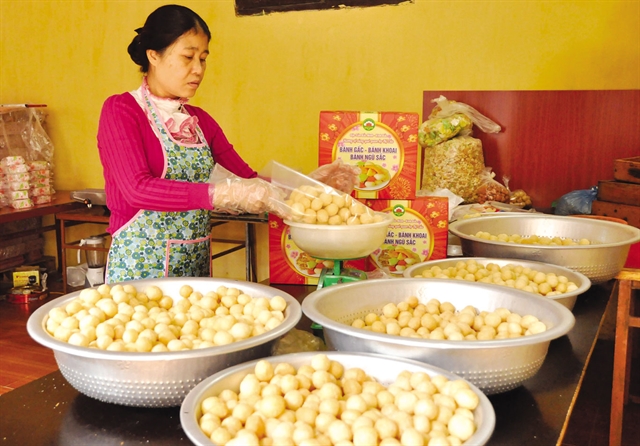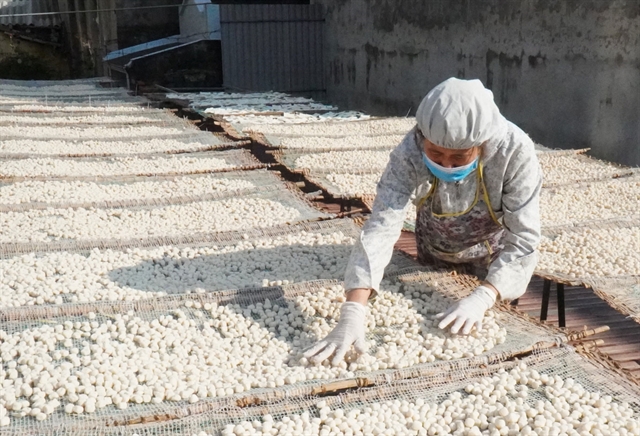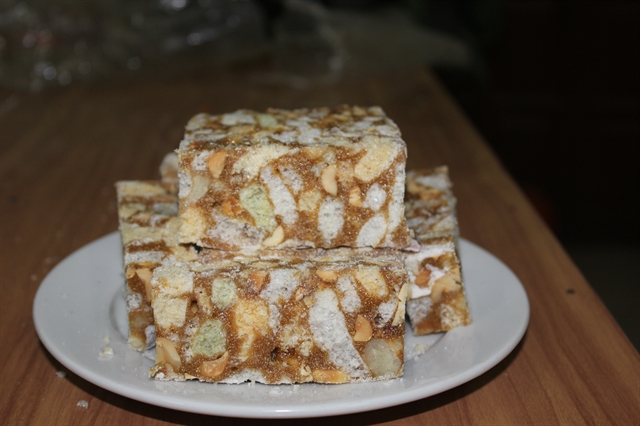 Life & Style
Life & Style
.jpg)
Quý Dương
The traditional sweet taro cake and five-colour cake have long been specialities of Thị Cầu Ward in Bắc Ninh, and have notably been recognised among the top 100 most delectable dishes in Việt Nam by VietKings.
Nguyễn Thị Điều, a 60-year-old local cake maker, said these cakes stand as a source of pride for her Thị Cầu Ward and for the broader Bắc Ninh Province.
While Điều is uncertain about the precise origins of the cakes, her grandfather said they have been around since his childhood.
 |
| Traditional sweet taro cakes are popular inside and outside Việt Nam. Photo baobacninh.com.vn |
Historically, nearly all local households engaged in the making of the cake, with the season for its production commencing in Autumn and extending through the Tết (Lunar New Year) festival.
"I still recall the resonant sound of pestles pounding bread, intermingling with the joyful laughter and cheerful exchanges throughout my ward during those days. We, the middle-aged folks, could never forget it," said Điều.
However, she noted that the number of makers has dwindled in modern times as numerous quality cakes and sweets have become available in the market. Nonetheless, Điều's family, including her descendants, perseveres in maintaining the craft handed down from their ancestors.
 |
| Drying sweet taro cakes. Photo baobacninh.com.vn |
To create the sweet taro cake, a variety of ingredients are used, including a special sticky rice (locally referred to as nếp cái hoa vàng), local taro, rock candy, white wine, wick grass, and the leaf of wild abelmoschus moschatus. The leaf is ground and mixed with water to extract its juice, which Điều says helps to tenderise the cake whilst imbuing it with a distinct flavour.
The sticky rice is first soaked for 6-7 hours, then steamed until perfectly cooked, before being combined with the previously mentioned ingredients and steamed grounded taro.
Following this, the mixture needs to be steamed for a second time, then thoroughly ground, thinly rolled, and cut into fingertip-sized pieces. These pieces are subsequently dried under the sunlight until they are completely desiccated.
Finally, the dried pieces are fried in cooking oil or pork fat until they achieve a dark yellow colour, after which they are added to a pan of boiling sugar, stirred thoroughly, and then removed, as detailed by Điều.
 |
| Bắc Ninh's five-colour cake, produced in the province's Thị Cầu Ward, is an important item of Tết (lunar new year) holiday. Photo tuyhoafood.com |
"In the past, the quality of the cake was heavily dependent on the weather. If it rained or there was limited sunshine, we had to dry it over wood charcoal, which was a particularly arduous process," added Điều.
In contrast to Điều, her neighbour Đinh Hồng Nhung has been crafting the five-colour cake, which was once used as an offering to kings.
Nhung said the five colours symbolise the relationships between humans and the universe. Both the sweet taro cake and the five-colour cake hold a significant place amongst local offerings to ancestors during the Tết holiday, serving to honour forebears and to express hopes for a fortunate new year brimming with bountiful crops.
 |
| Tasty five-colour cakes are available in Bắc Ninh's Thị Cầu Ward. Photo tuyhoafood.com |
The five colours in the cake symbolise five elements, explained Nhung: the white derives its natural fragrance and softness from the sticky rice; the yellow offers a cool, light bitterness from the gardenia fruit; the green brings a light coolness from pandan leaves; the red provides a buttery fatness from momordia cochinchinensis (a special fruit grown in Southeast Asia, including Việt Nam); and the brown, from molasses, represents the rich earth. VNS
.jpg)



